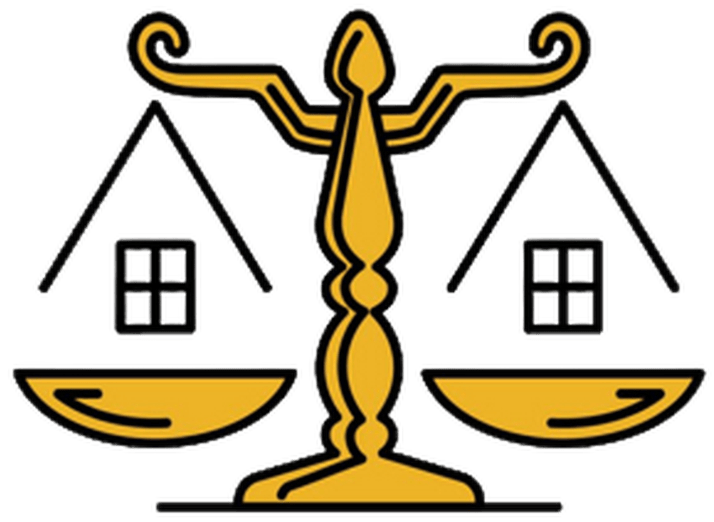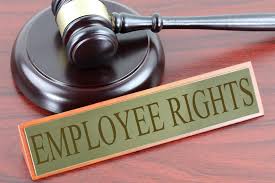
Unlock Your Ultimate Employee Rights & Protections: An Empowering Roadmap
Introduction
Protection Of Understanding Of Employee;
In today’s evolving workplace landscape, understanding employee rights and protections is essential for fostering a fair and respectful work environment. Employee rights encompass a wide range of legal and ethical standards designed to safeguard individuals from unfair treatment and ensure equitable conditions. This article provides an in-depth exploration of employee rights and protections, highlighting key areas of importance and offering insights into best practices for both employers and employees.
In today’s fast-paced and ever-changing professional landscape, understanding employee rights and protections is not just a legal necessity, but a cornerstone of a healthy, productive, and empowering workplace culture. As organizations evolve—with trends like remote work, the gig economy, and AI-driven workflows—employees can sometimes feel overwhelmed or uncertain about where their rights begin and end. This guide serves as your Ultimate roadmap to navigate the complexities of labor law, internal policies, and best practices for safeguarding your well-being on the job. By arming yourself with knowledge, you not only protect your own interests but also contribute to a culture of transparency, fairness, and mutual respect that benefits every stakeholder: from front-line staff to C-suite executives.
Firstly, we’ll explore the foundational legal principles that underpin employee protections—principles enshrined in statutes, regulations, and judicial precedents. We’ll break down major legislative frameworks like the Fair Labor Standards Act (FLSA), Occupational Safety and Health Act (OSHA), anti-discrimination laws (Title VII, ADA, ADEA), and key state-level statutes that expand upon federal baseline protections. You’ll learn not only what the law says, but how courts and agencies interpret key provisions—so you can recognize when your rights are being honored, or when they may be at risk.
Next, we’ll delve into practical workplace policies that amplify those legal safeguards. From clear job descriptions and transparent performance evaluations to grievance procedures and whistleblower protections, we’ll examine how forward-thinking organizations codify employee rights in handbooks and internal protocols. You’ll discover how to leverage these policies—request accommodations, report hazards, seek corrective action for unfair treatment, or negotiate remote-work arrangements—without fear of retaliation or ambiguity.
No guide on employee empowerment is complete without addressing the critical role of communication and negotiation. Whether you’re a newly hired team member seeking clarity on your schedule, or a tenured professional advocating for equitable pay, effective dialogue is key. We’ll offer step-by-step strategies for preparing for conversations with managers or HR: gathering documentation, framing issues in terms of mutual benefit, and escalating concerns through proper channels when informal discussions stall.
Beyond the employee-employer dyad, we’ll examine the ecosystem of external supports: labor unions, professional associations, government agencies, and legal aid organizations. You’ll learn how to determine when to seek counsel from a union representative or employment attorney, how to file a charge with the Equal Employment Opportunity Commission (EEOC), and what timeframes govern each type of claim.
Importantly, this guide recognizes that rights without responsibility can fall flat. We’ll highlight the obligations employees bear—to uphold confidentiality, avoid conflicts of interest, perform work to the best of their abilities, and respect the rights of colleagues. By understanding the reciprocal nature of workplace rights and duties, you’ll strengthen your credibility and foster a collaborative environment where legal protections serve their true purpose: ensuring safety, fairness, and dignity for all.
Finally, we’ll equip you with actionable checklists, sample correspondence templates, and a roadmap for ongoing professional development—because the journey to full empowerment doesn’t end with reading a guide. It’s an ongoing process of learning, advocacy, and collective improvement. Whether you aspire to climb the leadership ladder, transition to a new industry, or simply feel more secure in your current role, a solid grasp of your rights and protections lays the groundwork for confident career growth.
By the end of this introduction, you should already feel a surge of confidence: you’re not just an employee following a paycheck; you’re an informed stakeholder in a system designed—when properly enforced—to protect you. Let’s embark on this Empowering Guide together, starting with the bedrock of legal principles that every modern professional should know.
1. Core Employee Rights
Employee rights are foundational to a healthy workplace and are often enshrined in local, state, and national laws. Understanding these rights is crucial for both employers and employees to ensure compliance and promote a positive work environment.
-
Right to Fair Compensation:
Employees have the right to receive fair and timely compensation for their work. This includes adherence to minimum wage laws, payment of overtime for hours worked beyond the standard workweek, and equitable pay practices. Ensuring compliance with wage and hour laws helps prevent disputes and fosters trust between employers and employees. -
Right to a Safe Work Environment:
Employees are entitled to work in an environment that is free from hazards and risks. Occupational safety and health regulations require employers to implement safety protocols, provide necessary training, and conduct regular inspections to prevent workplace accidents and injuries. -
Right to Non-Discrimination:
Anti-discrimination laws protect employees from unfair treatment based on race, gender, age, disability, religion, sexual orientation, and other protected characteristics. Employers must ensure that hiring practices, promotions, and disciplinary actions are free from bias and discrimination. -
Right to Privacy:
Employees have a right to privacy in the workplace, including the protection of personal information and confidentiality of communications. Employers must balance the need for monitoring and security with respect for employees’ privacy rights. -
Right to Fair Treatment:
Employees have the right to be treated fairly and with respect. This includes the right to due process in disciplinary actions, access to grievance procedures, and protection from retaliation for exercising their rights.
2. Legal Protections for Employees
Legal protections play a crucial role in ensuring that employee rights are upheld and enforced. Understanding these protections helps both employers and employees navigate complex legal landscapes and maintain compliance.
-
Employment Contracts and Agreements:
Employment contracts outline the terms and conditions of employment, including job duties, compensation, and termination procedures. Clearly defined contracts help manage expectations and protect both parties’ rights. -
Family and Medical Leave:
Laws such as the Family and Medical Leave Act (FMLA) provide employees with the right to take unpaid leave for specific family and medical reasons without jeopardizing their job security. Understanding these provisions helps employees manage personal and family responsibilities while ensuring their employment status remains intact. -
Workers’ Compensation:
Workers’ compensation laws provide financial support and medical care to employees who are injured or become ill due to their work. This protection ensures that employees receive necessary care and compensation while shielding employers from litigation related to workplace injuries. -
Unemployment Benefits:
Unemployment benefits offer financial assistance to employees who lose their jobs through no fault of their own. These benefits help individuals manage during periods of unemployment and support their transition to new employment opportunities.
3. Addressing Employee Rights in Practice
Effectively addressing employee rights in practice involves implementing policies, training, and procedures that promote fairness and compliance.
-
Developing Comprehensive Policies:
Organizations should establish and communicate clear policies regarding employee rights, including anti-discrimination, harassment, and grievance procedures. Comprehensive policies provide a framework for addressing issues and ensuring consistent application of standards. -
Training and Education:
Providing training for managers and HR personnel on employee rights and legal requirements is crucial for fostering a compliant and respectful work environment. Training helps prevent violations, manage conflicts, and ensure that employees understand their rights and how to exercise them. -
Implementing Grievance Procedures:
Effective grievance procedures allow employees to raise concerns and seek resolution in a fair and timely manner. Establishing a clear process for handling complaints helps address issues before they escalate and promotes a culture of transparency and accountability. -
Conducting Regular Audits:
Regular audits of employment practices and policies help identify potential areas of non-compliance and address them proactively. Audits ensure that the organization remains aligned with legal requirements and industry standards.
4. The Role of Communication and Transparency
Communication and transparency are key to upholding employee rights and fostering a positive workplace culture.
-
Open Communication Channels:
Encouraging open communication between employees and management helps address concerns, clarify expectations, and resolve issues effectively. Providing avenues for feedback and dialogue supports a collaborative work environment. -
Transparent Policies and Practices:
Clearly communicating policies, procedures, and changes related to employee rights ensures that all employees are informed and understand their entitlements. Transparency helps build trust and reduces the likelihood of misunderstandings or disputes.
5. Addressing Challenges and Disputes
Handling challenges and disputes related to employee rights requires a proactive and fair approach.
-
Resolving Disputes Promptly:
Addressing disputes and grievances promptly and fairly helps maintain a positive work environment and prevents escalation. Effective resolution involves listening to concerns, investigating issues, and implementing appropriate actions. -
Seeking Legal Advice:
In complex situations involving employee rights, seeking legal advice can provide guidance on compliance and best practices. Legal experts can assist in navigating disputes, interpreting regulations, and ensuring that actions align with legal requirements.
6. The Impact of Upholding Employee Rights
Upholding employee rights has a profound impact on organizational success and employee satisfaction.
-
Enhancing Employee Morale:
When employees feel valued and protected, their morale and engagement increase. A positive work environment contributes to higher productivity, job satisfaction, and overall organizational success. -
Reducing Turnover and Retention:
Fair treatment and respect for employee rights contribute to lower turnover rates and improved retention. Organizations that prioritize employee rights are more likely to retain top talent and build a strong, committed workforce. -
Mitigating Legal Risks:
Compliance with employee rights and protections reduces the risk of legal disputes and penalties. Adhering to legal requirements helps organizations avoid costly litigation and maintain a positive reputation.
7. Conclusion
Understanding employee rights and protections is essential for creating a fair, respectful, and legally compliant work environment. By recognizing and upholding these rights, organizations can foster a positive workplace culture, enhance employee satisfaction, and mitigate legal risks. Implementing comprehensive policies, providing training, and addressing issues transparently contribute to effective management of employee rights. Ultimately, prioritizing employee rights not only supports individual well-being but also drives organizational success, demonstrating a commitment to fairness, respect, and legal compliance.
Contact Us
For premier legal research services in Labor law cases in Nigeria, contact Chaman Law Firm today. Our offices are conveniently located in Lagos, FCT Abuja, Ogun State, and the UK. We are readily available to assist you with your legal needs. Whether you require consultation, representation, or ongoing legal support, Chaman Law Firm is your trusted partner in navigating Labor law in Nigeria.
Call us at 08065553671 or email us at info@chamanlawfirm.com to schedule a consultation.
- Employment Contracts and Conditions
- Wages and Compensation
- Workplace Health and Safety
- Collective Bargaining and Trade Unions
- Discrimination and Equal Opportunity Employment
Chaman Law Firm: Your Trusted Legal Partner in Labor Law
By choosing Chaman Law Firm, you are selecting a team of dedicated professionals committed to providing exceptional legal services tailored to your unique needs. Let us be your advocate and guide in the complex world of Labor law, ensuring your interests are protected and your goals are achieved.


